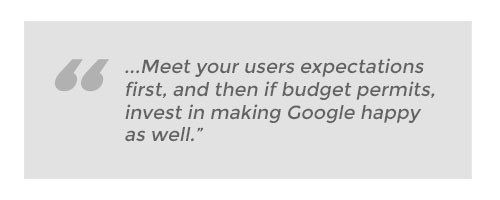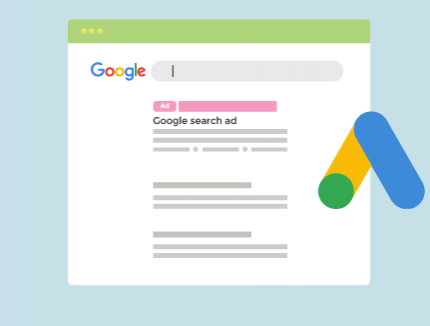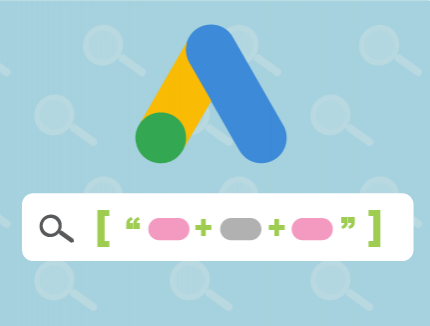BLOG
What are Core Web Vitals and how can they affect your bottom line?
In November 2020 Google announced that Page Experience and Core Web Vitals will become ranking signals from June 2021. This effort to improve user experience means your brand’s visibility in search results will be impacted by your website’s visual stability, how it loads, and how fast it reacts to user interaction.
What are Core Web Vitals?
Core Web Vitals (CWVs) are three user-centric metrics that help businesses (and Google) monitor, assess, and improve the user experience (UX) on their website. The three metrics Google consider your website’s Core Web Vitals are:
1. Largest Contentful Paint (LCP)
This is how long it takes your website to load to the point where the page’s main content has likely loaded. When your LCP is fast, it reassures users that your webpage is useful. This is measured by the render time of the largest text block or image visible.
2. First Input Delay (FID)
First Input Delay is a measure of your website’s interactivity; that is how long it takes your site to respond to the user’s first interaction be that a button tap, link click/tap, inputting data in a form, etc. FID helps measure how responsive and interactive users will perceive your website to be.
3. Cumulative Layout Shift (CLS)
This metric measures potentially the only website behaviour more annoying than slow loading — how often elements of the page move around while the user is trying to interact with or read them. A prime example is trying to click on a link only to have it move out from underneath your cursor/finger the instant before you click/tap it, potentially resulting in your clicking/tapping a link you didn’t want to.
Technically a layout shift takes place whenever a visible element changes position from one rendered frame to the next. CLS is the sum of all these instances during the lifespan of the page in question.
What happens if my website has poor Core Web Vitals?

From what we hear there is a good chance your website’s pages may not make it into the green “Good” bracket shown in the image below.
That said, if your website loads quickly and provides a good perceived UX, then slotting into the “Needs Improvement” bracket isn’t the end of the world, but it’s not ideal.
Nigel Wells, Limelight’s Technology Director explains why pleasing Google’s CWV is important, but shouldn’t come before your users, “Perception is key and the end user’s perception of navigating your website can be far different from how Google’s algorithms assess your site. Meet your users expectations first, and then if budget permits, invest in making Google happy as well.”
This article published in August 2020 tested 20,000 URLs and 2,500 keywords against Google’s LCP, FIP and CLS performance assessment and only 12% of URLs passed on Mobile devices and 13% of URLs passed on Desktop devices. It also showed that URLs that had good visibility had better Core Web Vital scores (CWVs). The second point shows that strong CWVs will help improve your visibility.
Google’s Core Web Vitals assessment scale.
What is the Page Experience Signal?
Page Experience is the wider grouping of SEO signals that Google Search interprets with their algorithms (along with 200+ other signals) to determine how prominently your website is featured on SERPs — highest organic result, buried beyond the first page, or somewhere in between.
From June 2021, Core Web Vitals will be added to the Page Experience signal grouping, which already includes signals; Mobile Friendly, Safe Browsing, HTTPS, and No Intrusive Interstitials.
The signals that form your website’s Page Experience signal
Why does Google want your website to provide a good User Experience?
A poor user experience can easily result in poor user engagement and a high bounce rate — a measure of how many of your website sessions end prematurely with the user leaving, returning to the search engine results page [SERP] to try another business’s website which they hope will have a better UX than yours provided).
Google wants their Search users to find what they’re looking for with minimal effort so that they continue using their search engine product. Websites boasting good Page Experience (amongst many other SEO signals) by way of strong Core Web Vitals and wider UX are rewarded with good SERP visibility — this is Google’s way of serving the best results for each user’s search.
Looking long-term, Google says “working towards a shared set of user experience metrics and thresholds across all websites, will be critical in order to sustain a healthy web ecosystem.”
How do I know if my website’s Core Web Vitals are strong?
Because measuring and improving Core Web Vitals is the domain of Technical SEO, website design and development, Google recommends considering contact a professional digital provider like Limelight.
Measuring your Core Web Vitals using industry standard tools is the first step (and can be performed as part of a comprehensive sitewide SEO audit), knowing what to do with the findings is part of the challenge and why this isn’t really the remit of non-technical users.
Once changes are implemented, ongoing monitoring and maintenance can help your business’s website adapt to future Google Core Algorithm updates — this is essential to ensure your website’s SEO is on point and providing the best organic visibility possible to drive traffic and revenue through your website.
Get in touch to learn more about Core Web Vitals
June 2021 will be here before we know it. So, for an informal chat about the pulse of your website’s Core Web Vitals, SEO, or your online presence in general, drop us a line and we’ll help you breathe life into your site and get more traffic and a better ROI.









